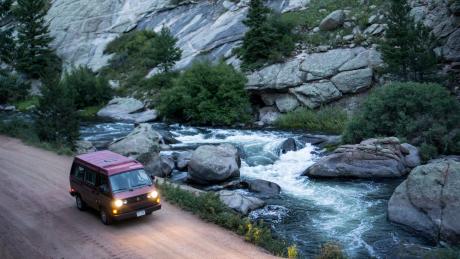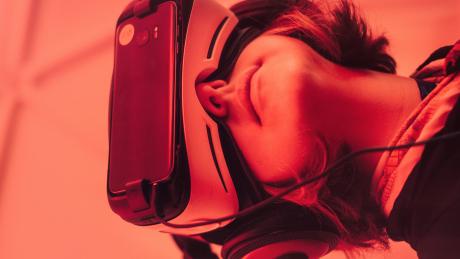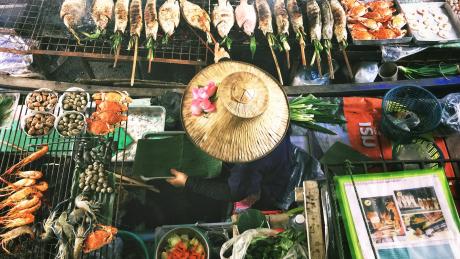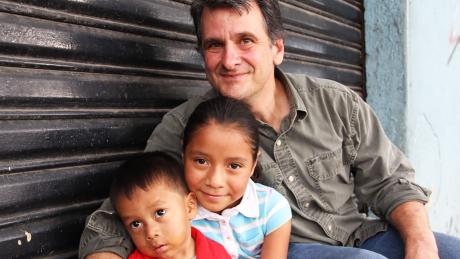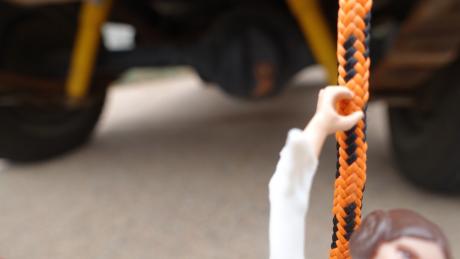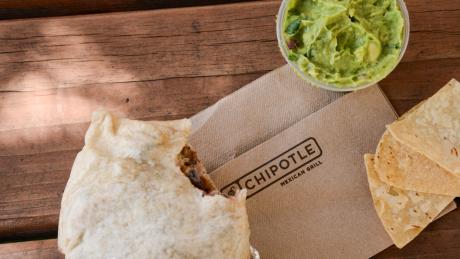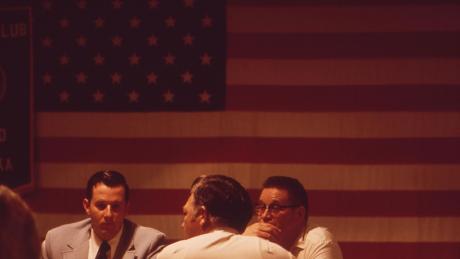
Loving Your City
Not everyone knows this, but And Sons is located in an old USA Hockey building, next to a storage plot and a cryptically named software company, Cetis. Behind the storage plot is a shipping and logistics company. I bike behind it on my way home, because the road there connects to a bike path. The money transfer company, GARDA, has an office there. I know this because every so often I’ll round the corner of that building while big men with shotguns guard other big men unloading cases of cash. We exchange uneasy nods. I was held at gunpoint one time in this town, but I was stealing a street sign. The man with the gun was regular-sized. Anyway, our industrial corner is a good illustration of Colorado Springs. It’s a city you can count on to use all the space it has in pretty much the least imaginative way available.*
Case in point: Just down the street, there’s a little strip mall, elevated by the business there, but a strip mall nonetheless. There’s a Thai restaurant, a barber, barbecue, some really good beer. The strip mall isn’t nice, but it’s trying. By it, there was a dirt lot that could have been anything, but because this is Colorado Springs, they put in a gas station. If you stand on the edge of the property, you can see another sprawling gas station just up the street. Round the corner, there’s another one. Imagination atrophies.
Sam and I maintain a sporting dislike for our city, a kind of casual misanthropy, because Colorado Springs seems to be dominated by human foibles. It’s big, flat, jumbled, dull, like a pancake poured onto a hot griddle in a long, steady stream. C. S. Lewis depicted hell in The Great Divorce as a place where anyone can have whatever they want just by wanting it - what most people want is to get away from one another, so hell is constantly expanding. This town is a bit like that. We don’t really like the town as a town, is what I’m saying. But I say it as a confession, because I don’t think it’s good to dislike your town or any town. Bruce Springsteen wouldn’t dislike Colorado Springs. There’s a hill here where you can park a car and look at the power plant, the industrial park.** He’d love that.
I recently sat down with a guy, a kind of local hero, who’s a part of the city’s unique and excellent coffee scene. He lives downtown because he wants to start a monastery there; he knows everyone. But that dude had a beard, tattoos, the mysterious power that turns someone into a somebody. How do you get that power? Another friend has what’s called a theology of place, a deep understanding of what it means to be local. I’d like that, too. I think what I do here is patronize cool places and establish first-name rapport with baristas. Also I use the expanding network of bike paths. Beyond that—not much.
In Vancouver, I met a bunch of geographers. Since they were the first I’d encountered, I asked them what they did. Over the course of two or three beers and a big pile of nachos, they explained that they did, basically, whatever. City zoning, cultural theory, art criticism, human geography, anything. Doing anything in geography has been made easier by the creation of this thing, socio-spatial theory, which points out that practices shape places which in turn shape practices.
Stay with me here.
An influx of cyclists into a city sometimes results in the creation of bike paths. Cyclists use those paths, which explains why there are more bikes in certain parts of certain cities. BUT. Since cyclists like things like coffee shops, parks, and cafes, there tend to be more of those in the part of the city where the bike paths are. Not because they’re the best places for cafes, but because a material thing, bike paths, shaped an immaterial thing, culture. In this case, where a certain kind of person spends their time.
(The images in this article help explain socio-spatial theory. They’re taken from an MIT project called You Are Here, in which a team of computer scientists mapped cities according to different variables: the availability of transportation, the presence of mature trees, the proximity of coffee shops. The intriguing thing is, every factor revealed an almost entirely unique city. If you only look at coffee shops, the city has one shape. If you only look a mature trees, the city has another).
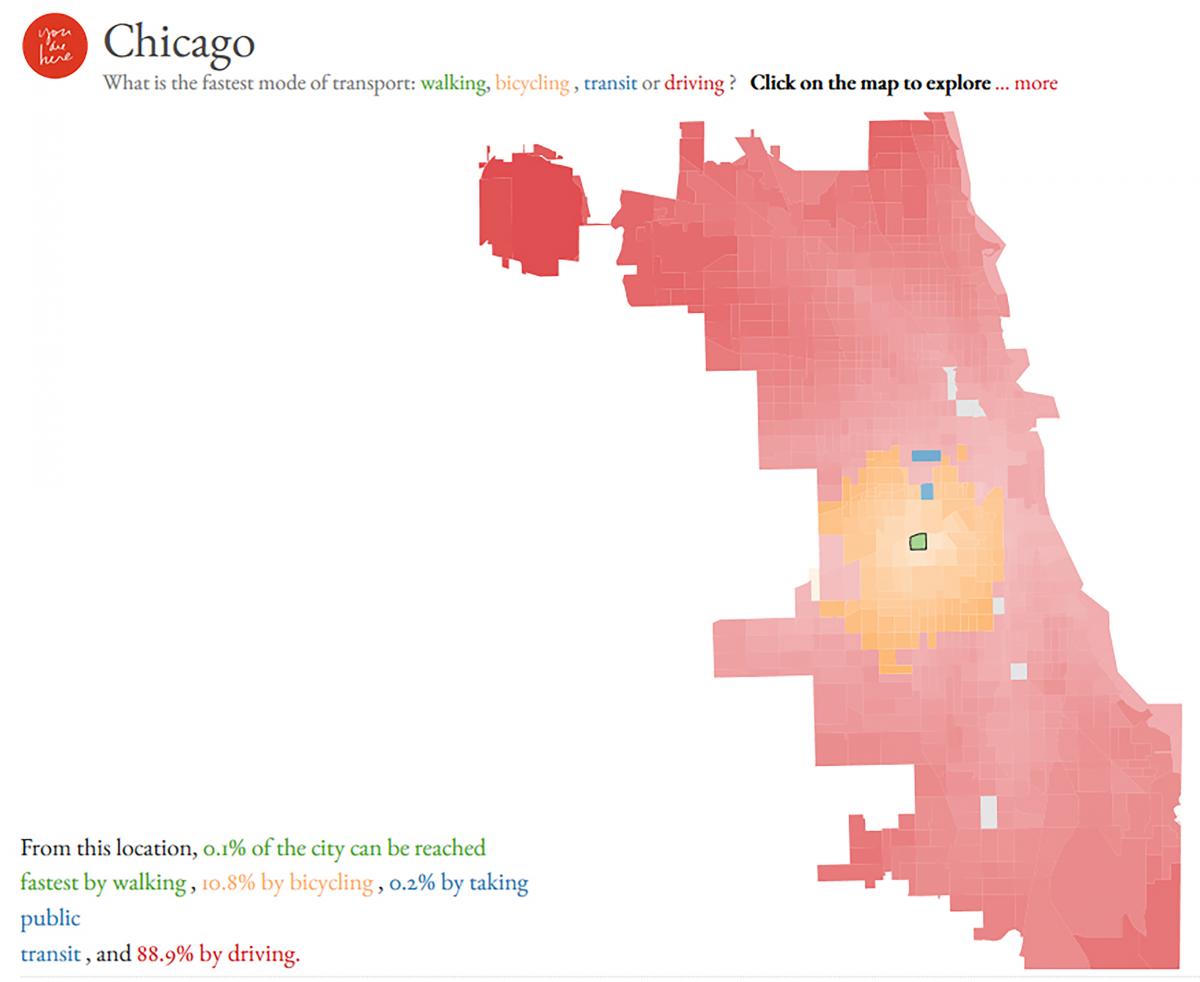
This is really fun to think about.
It explains why building more roads makes traffic worse. People drive. So you build more roads. This makes it easier for more people to drive, which increases the number of cars on the road. It also decentralizes a city, which makes it harder to walk. So even more people drive. In the Netherlands, they’ve had huge success decreasing traffic (and traffic jams) by building fewer roads, even turning existing roads into walking paths. Here in Colorado Springs, they’re expanding the highway. That drives me crazy, because it’s going to make traffic worse.***
Another consequence. If socio-spatial theory is right, we learn places through practices.
If you’ve ever learned a new sport, you’ve experienced this firsthand. Last year, I returned to mountain biking. In the space of six months, I learned more about the open spaces in town—and the routes between them—than I had in years. Learn tennis, and you’ll learn where the outdoor tennis courts are. Become a tenacious walker, and cool paths will materialize. When asked to give advice to a local church, my wife, sort of a church wiz, advised, Don’t own a car. It will give you a better understanding of your city.
So. It’s generally acknowledged that what you do shapes your understanding of where you are. As I’ve been thinking about this, I’ve developed a few questions to help me evaluate the quality of my practices. If the goal is to love my city, then things that increase my knowledge of and engagement with my city are helpful. Things that do the opposite are not.
1. Where is the biggest hill within a mile of my house?
This is a practical question, from a date perspective. But it’s meant to expose whether or not I deal with any of the geographic realities of my place. Do I just teleport (aka drive) between places I already know—work, home, a favorite restaurant? If I’m never actually moving around, walking, biking, hiking, that kind of thing, I’m introducing a level of separation at square one that handicaps the rest of the process.
2. What five people (not friends, family, or coworkers) do I see most often?
For most people, this is a grocery store clerk or a barista or someone like that. That’s fine, and it’s good to have friendly relationships with those people. But it’s a real problem if I never see the people with whom I share a real place. Knowing a cashier is not like knowing the folks who shoot hoops in the afternoon at a park near my house.
3. Who do I know that has made a decision about the shape of my city?
I’m not talking about a mayor or anything like that. I’m talking about neighborhood councils, people who work for the park service, a trail-building organization, etc. This matters, because a neighborhood is a group of people who share interests by virtue of sharing space. If that’s true, and I don’t know any of those people, then I’m not actually engaging the management of my place. Like whether or not a new walking path goes in. Or what a neighborhood is going to do about a growing homeless population. Or whether shipping trucks should be allowed to use a certain street. I know local government can be laughable and neighborhood councils have a reputation as petty and agonizing, but the issue is connection. What would it look like to know someone who is shaping my city?
4. What are the best…?
This is, hands down, the most fun. When I lived in Washington, I had a favorite Thai restaurant, a janky place I chanced upon because it was near my workplace. Then a buddy invited me somewhere else. He’d been on a local quest to find the best Thai restaurant in the state. That quest took us down a highway past town to a bright pink building off the road. The food was wonderful, the quest even better. It fostered understanding. Here’s my challenge: Build a list of categories, or use this one, and be as specific as possible. Then make it a weekend goal (over a bunch of weekends) to find these places, one at a time. These are places I’ve looked for:
Cinnamon roll.
Late-night Mexican food.
Korean, Vietnamese, or Indian restaurant with—to make it harder— 15 tables or less.
Donut.
Romantic patio. Can be a coffee shop, whiskey house, or brewery.
Local bike/running race. Weirder is better. Ex.: Colorado Springs did a Where’s Waldo race.
Wood recycling lot.
Thrift store.
Haircut. Cannot be a chain. Must be, for my purposes, very cheap. Pro Tip: If you’re not paying cash, you’re paying too much.
Hiking trail.
Water source. I don’t mean watering hole here. I mean water you can get in.
On and on it goes. You get the point. We haven’t even mentioned music venues, bookstores, art galleries, those things, but they should be on your Learn Your City list.
5. What are the key issues facing my city?
Colorado Springs had a huge fire a number of years ago. Now we have floods, erosion, closed natural spaces. It’s made life really complicated for a lot of people, but knowing about it gives me a better grasp on my city as a place. This question is sort of a two-parter. Most people have a loose grasp on their city’s problems/problem solving, like homelessness, growth, gentrification, what have you. Still, it’s a very interesting email to send the mayor’s office or independent newspaper: What would you define as the key issues facing this town? When you have that in hand, the next part is to learn who’s positioned to do something about it. I’m not saying jump in and volunteer, go wild; I’m just saying make the dialogue of a city visible, and it looks more personal. That makes me, at least, feel less cynical. But a word of caution on this point: this can backfire, by which I mean become totally overwhelming. I’ve learned we have education issues, land management conflicts, homeless concerns, etc., etc., etc. I don’t think anyone is meant to grapple with all their city’s problems—or anyone’s problems—at once. So don’t try to take it all on. The point is appreciation, not engaging everything, because knowing a place well impacts how you live in it.
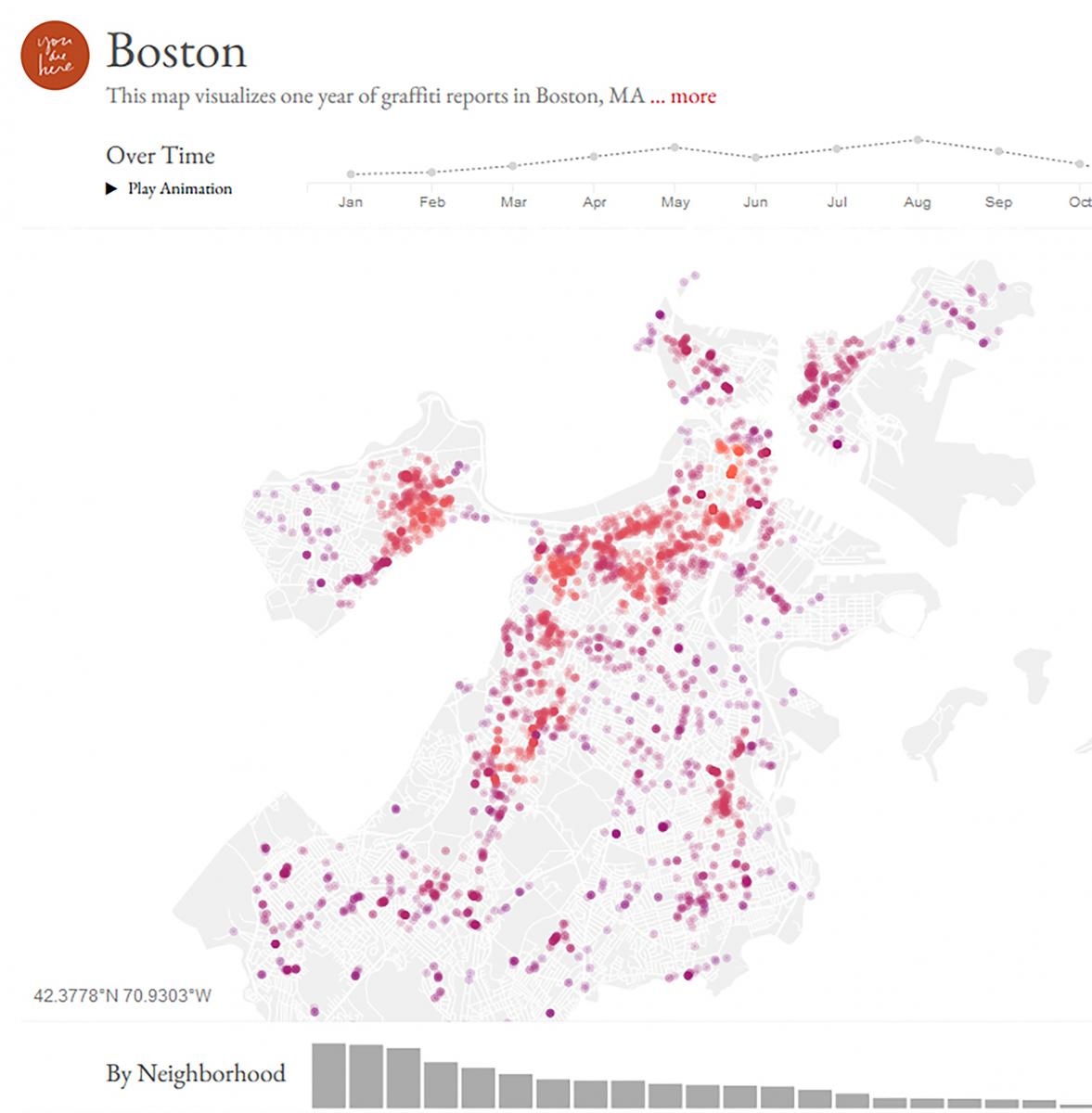
And of course, there is a larger issue here.
There is always a larger issue. In this case, it’s being a loving person. I mean, loving your city is great. But it’s pretty clear loving your city starts with loving more in general. An active, informed person can care about their city, but that’s not the same as loving it. Loving is a larger goal.
On that, I’ve only got a couple recommendations. This is probably a topic for a much longer article.
1. Go outside. Every day. This is the easiest, fastest, most effective way to become a compassionate, empathetic person, which contributes to becoming a more loving person. There’s an incredible amount of research indicating that being outside in a wild place for 30 minutes makes a person respond to stories with more empathy. It’s the exact opposite of, say, 30 minutes commuting.
2. Ask, What is your life with God like? Where do you feel able to regularly engage the presence of God? Following Padre’s advice, you can ask it this way: What’s something I enjoy into which I could invite God? Running? Cooking? Reading? Walking? Chess? It isn’t complicated. We become like the people we spend time with. The only guaranteed way to become loving people is to spend regular time with Jesus, the person whose presence, more than anything else in the universe, produces an effect.
*Counterexamples include the Lincoln Center, the Ivywild School, some very good parks, etc. Overall, the point holds.
**Actually, that’s what Em and I did for our anniversary last year. Because I love Bruce Springsteen. Normally, we’d hike. I’ve worn out two copies of Nebraska so far on account of my car and its tape deck; both were worn out. Instead of playing any of the token songs, they intoned an undulating whine.
***“But Blaine!” says the economist I like to think reads this magazine, “You can’t possibly object to better infrastructure, which lowers the overall cost of doing business and creates new opportunities for local communities?” “Um—” I say, already heading for the bookshelf, “Let me introduce you to a fascinating field called the history of the world, specifically, the work of Daron Acemoglu and James Robinson. If you make it easier to access a place and give everybody access at the same time, you’re always going to support the person who’s already the most competitive. What I mean is, expand the highway, and you make it easier for Walmart and McDonald’s to infiltrate a city, but not necessarily easier for local people to live lives. Which is a problem, because fewer enterprises with ties to the place they’re in = more alienation. Don’t get me wrong, Mr. Economist, I don’t think we’ll ever make a utopia without Jesus, but I’ve still got to say, stop it with the highway thing.” The conversation does not stop at this point, but digresses into employment bases and capacity utilization and whatever. Eventually, I accuse the economist of being an ethical agnostic with no appreciation of the meaning and aim of man.

